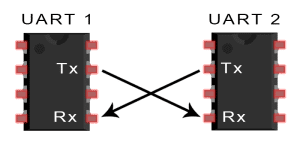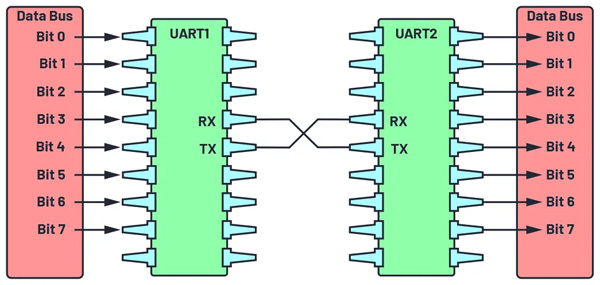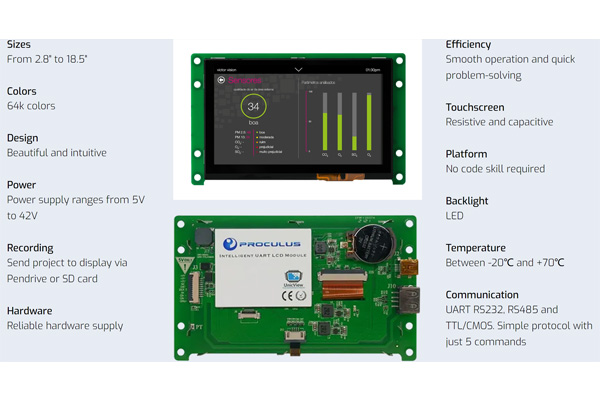In the realm of digital communication, the Universal Asynchronous Receiver-Transmitter (UART) plays a crucial role. From microcontrollers to computers, from automotive electronics to industrial automation, UART serves as the backbone for device-to-device communication.
At its core, UART is a serial communication protocol that enables data exchange between electronic devices. It stands as a conduit for asynchronous communication, permitting devices with contrasting clock rates or structures to communicate without a hitch.
The term 'asynchronous' within UART means that it does not have a shared clock signal to synchronize the output bits from the transmitting unit to the receiving end. Instead, data transfer occurs bit by bit, and the receiver and transmitter must operate at the same baud rate, the rate at which information is transferred, to ensure accurate communication.
In UART communication, two UARTs communicate directly with each other. The transmitting UART converts parallel data from a controlling device like a CPU into serial form, transmits it in serial to the receiving UART, which then converts the serial data back into parallel data for the receiving device. Only two wires are needed to transmit data between two UARTs. Data flows from the Tx pin of the transmitting UART to the Rx pin of the receiving UART:

UART communication begins with the devices being configured with the same parameters: baud rate, data bits, parity, and stop bits. Once initialized, the sender initiates the communication by transmitting a 'start bit' (logical 0). This signals the beginning of a data frame and helps the receiver synchronize its clock with the incoming data.
Following the start bit, the actual data bits are transmitted. If configured, a parity bit is included after the data bits for error-checking. This bit helps detect transmission errors by ensuring an even or odd number of 1s in the data. One or more 'stop bits' follow the data bits and the optional parity bit, signaling the end of the data frame and providing a brief pause before the next frame begins.
The receiver continuously monitors the incoming signal. It detects the start bit, synchronizes its clock, reads the data bits, and checks the parity bit (if included). After identifying the stop bit and completing the reception of the data frame, it processes the received data according to the application's requirements.

UART models are tailored to cater to diverse application requirements, providing various features and capabilities:
1. 16550 UART: One of the earliest models, the 16550 introduced a FIFO (First In, First Out) buffer, which improves data transfer efficiency by storing multiple bytes before transmission or reception.
2. UART with DMA (Direct Memory Access): These UART models enable data to be transferred directly between memory and UART without involving the CPU, offloading the CPU from managing data transfers and enabling more efficient multitasking.
3. Bluetooth UART Modules: UART modules integrated into Bluetooth devices enable wireless serial communication.
4. USB-to-UART Bridge: These bridges convert USB signals to UART signals, allowing devices with USB interfaces to communicate with those using UART.
5. Multi-channel UART: Some UART models feature multiple communication channels, allowing simultaneous communication with multiple devices.
6. Low-energy UART: These models are designed to operate with minimal power consumption, making them suitable for battery-powered devices or energy-efficient applications.
7. Programmable UARTs: These offer flexibility by allowing users to configure various parameters, such as baud rate and data format.
UART's wide applications reflect its versatility and reliability:
1. Microcontroller Communication: UART allows microcontrollers to exchange data with peripheral devices, enabling seamless integration and control in applications like robotics and industrial automation.
2. Wireless Communication Modules: Many wireless communication modules, such as Zigbee or LoRa, utilize UART for communication.
3. GPS Modules: UART facilitates communication between microcontrollers and GPS modules, allowing devices to receive accurate location data.
4. Bluetooth Communication: UART enables communication between microcontrollers and Bluetooth modules, enabling wireless connectivity for applications like wearables, health devices, and smart home systems.
5. Programming Microcontrollers: UART serves as a programming interface, allowing developers to upload firmware or debug code on microcontrollers.
6. Industrial Automation: UART facilitates communication between the central controller and diverse industrial components, enabling real-time monitoring, control, and data acquisition.
7. Smart Metering: UART is employed in smart meters to communicate with microcontrollers, facilitating the collection and transmission of consumption data.
8. Human-Machine Interface (HMI): UART connects microcontrollers to display units or touchscreens, enabling the implementation of user interfaces.
9. Automotive Electronics: UART is employed in automotive electronics to communicate between microcontrollers, sensors, and entertainment systems.
10. Serial Communication Between Computers and Peripherals: UART is used in serial ports to enable communication between computers and peripherals, facilitating data transfer and device control.
As technology continues to evolve, the role of UART in the future of computing remains crucial. It's anticipated to play an even more significant role with the exponential growth in Internet of Things (IoT), autonomous vehicle technology, drones, and space exploration missions.
Proculus UART TFT LCD Modules are Modules with no OS. They send commands through UARTs. Communications are implemented with 5 simple serial commands.
The module is configured for touchscreen and graphical design. To create a GUI easily, use UnicView Studio, GUI design software, on your computer, regardless of your coding skills.
We offer intelligent displays in various sizes to suit your application needs. Our range includes small cost-effective options for limited physical space, as well as larger screens suitable for industrial and medical applications.

